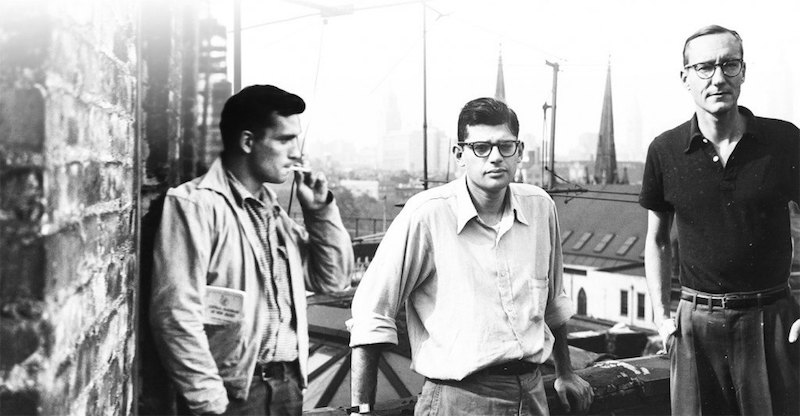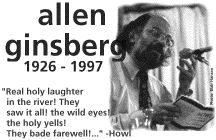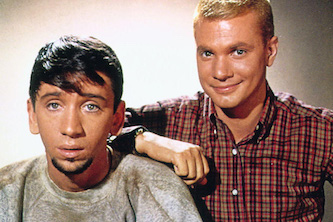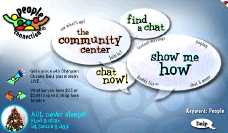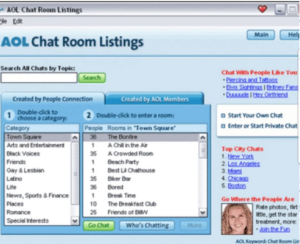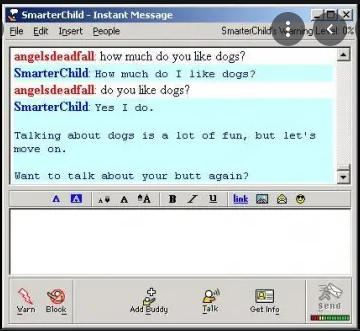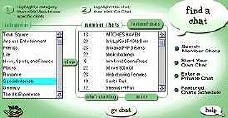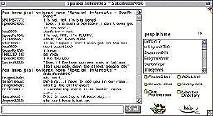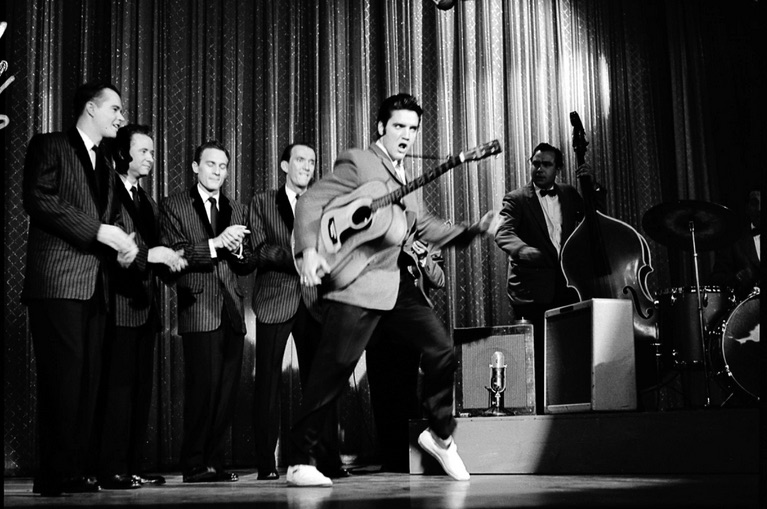
Elvis Online 8/28/1997
by H.B. Koplowitz
I was never much of an Elvis Presley fan, which may explain my lackluster review of Elvis websites in 1997, on the 20th anniversary of his death (Aug. 15, 1977). Or maybe the websites were lackluster (two years later, a similar review in the Los Angeles Times came to a similar conclusion). I did manage to mention an early legal dispute over fair use of copyrighted content, like music and photos, on the internet, and “Web rings,” an early way to navigate the World Wide Web before Google brought a semblance of order to the chaos.
He may have sold a billion records and starred in 33 movies. His musical blending of blues, gospel and hillbilly may have popularized, if not created, rock and roll. And his swiveling hips may have done as much to usher in a social and sexual revolution as pot and the pill. But on the 20th anniversary of Elvis Presley’s death, cyberspace commemorated the King of Rock and Roll mostly with Elvis sightings, Elvis impersonators, and, of course, Elvis merchandising.

Exhibit A is “Elvis Lives @AOL,” America Online’s Elvis Web site (keyword: Elvis). By virtue of its 8.5 million subscribers, AOL is the default zeitgeist of the Internet. For its 20th anniversary “memorial” to Elvis, AOL offered some vintage pictures and thumb-sucking essays, but mostly impersonators and sightings, courtesy of Hecklers Online, along with a slide show “in which President Clinton talks candidly about what the legend Elvis Presley left behind means to him.” Oh boy. Not to mention “The Shop,” where you could purchase Elvis sunglasses, CDs and other items.
Elvis gets much the same treatment on the rest of the Web. Consider “Disgraceland,” which is billed as a “humorous tribute to Elvis, his fans, zucchini, Reno and a variety of related and unrelated subjects.” It also boasts of having more Elvis links than the Vienna Sausage Factory.

Some “Disgraceland” links have serious content, but most are kitsch, such as Elvis wedding chapels, Elvis velvet paintings, a zucchini made up like Elvis, and images of the King superimposed on Mount Rushmore and the Sistine Chapel. Especially notable is Friz-Elvis, the world’s first (and hopefully only) budgie Elvis impersonator, i.e., a [Photoshopped] parakeet dressed up like Elvis. There is also a cow tipping page, which doesn’t seem to have much to do with Elvis, but what the hey. And for the 20th anniversary of Presley’s death, The Disgraceland Gift Shop was offering a limited number of original Memphis newspapers from August 16, 1977.

“Disgraceland” is a stop on the “Won’t You Wear My TCB Ring,” or Elvis “Webring,” a sort of guided Web tour where Web surfers can click from site to related site until they return to the first site. The creator of the Elvis Webring is Lex Raaphorst, a Dutch Elvis fan. Other sites in the Webring include one for signing a petition to clone Elvis, “Americans for Cloning Elvis,” and “The Uselessness of Elvis,” which has a link to “The Flying Elvi,” the skydiving Elvis impersonators who appeared in Honeymoon in Las Vegas.
Raaphorst also hosts “Elvex Pages” which is one of the most complete and easy to access repositories of Presley song lyrics, along with a tasteful filmography of the King’s 33 mostly forgettable movies, replete with movie posters, cast and plot summaries.
At the bottom of many Elvis Web sites is the disclaimer that they are unaffiliated with Elvis Presley Enterprises, Inc., which owns the trademarks to Graceland, Elvis, and Elvis Presley. The disclaimers are the result of an early skirmish over copyright infringement and the Internet involving “The (unofficial) Elvis Home Page.”
While touring Graceland with her mother in 1994, space industry technician Andrea Berman came up with the idea for a Web page that included a virtual tour of the mansion using picture post cards and sound clips of Presley’s music. Her Elvis home page soon became a popular site. Then the folks who own the real Graceland, Elvis Presley Enterprises, Inc., claimed copyright infringement and threatened to sue unless she remove her virtual tour and sound clips. Rather than go through the legal hassles, Berman pulled the items from her site. [Or did she?]
The “Official Worldwide Website for Elvis Presley’s Graceland” <elvis-presley.com> has no virtual tour and no Elvis sound clips. Except for a sanitized biography of the King, along with Graceland tour and gift shop information, it doesn’t have much else either.
There is, however, at least one Elvis site that focuses on the primal Presley, the one before the Beatles, before the jumpsuit, and before the Colonel. The “Elvis Lives In Evil Levis” Web site contains some great photos and interactive content focusing on the ’50s Elvis. The creator of the site, Anne C. Stinehart, is a graduate student working toward a PhD in medieval history at the University of Virginia in Charlottesville. Go figure.


